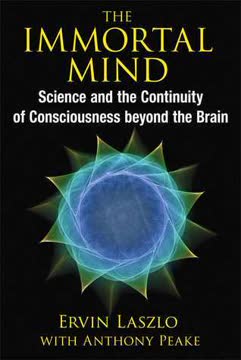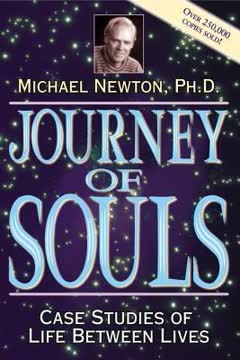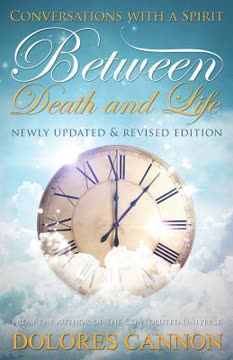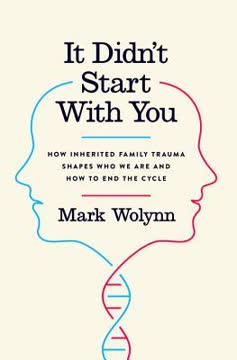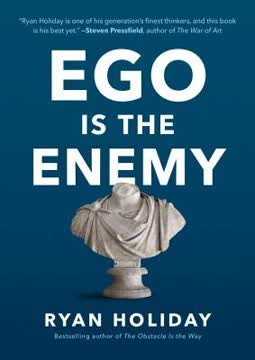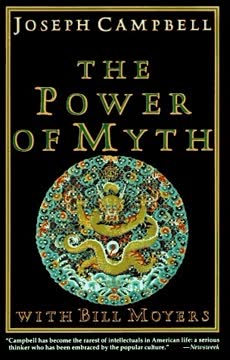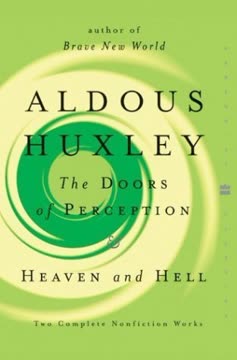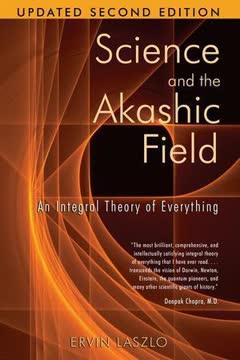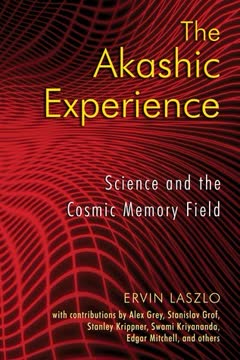Key Takeaways
1. Near-Death Experiences provide evidence of consciousness beyond brain function.
NDEs tell us that conscious experience is possible during the time the brain is temporarily dysfunctional.
Consciousness anomaly. Near-Death Experiences (NDEs) occur when individuals have conscious experiences while their brain is clinically dead, challenging the materialist view that consciousness is solely a product of brain function. These experiences are reported with significant frequency and often include veridical perceptions.
Common traits. NDEs share core features across diverse accounts, including out-of-body experiences, tunnel visions, encounters with deceased loved ones or beings of light, and panoramic life reviews. Historical accounts, like Plato's story of Er, show these experiences are not new.
Documented cases. Studies by researchers like Pim van Lommel and Michael Sabom, and cases like Pam Reynolds's operation, provide clinical evidence of complex conscious experience occurring during periods of zero measurable brain activity, suggesting consciousness can exist independently.
2. Apparitions and After-Death Communication suggest consciousness persists after death.
It appears that phenomena of visions and apparitions are not exceptional.
Contact with the departed. Reports of apparitions and After-Death Communication (ADC) describe spontaneous or induced contact with individuals who are no longer living. These encounters are widespread across cultures and history.
Veridical information. Many cases involve the communication of factual information unknown to the living witness at the time, later verified. Examples include deathbed visions of recently deceased relatives unknown to the dying person, or details about circumstances of death.
Systematic study. Organizations like the Society for Psychical Research and projects like the ADC Project have collected thousands of accounts, providing a basis for studying these phenomena, which suggest a form of consciousness can manifest and communicate after physical death.
3. Medium-Transmitted Communication offers contact with discarnate entities.
It appears that the contacted entity is a quasi-living consciousness that is not the consciousness of a presently living person.
Channeling messages. Communication with deceased persons can occur through a medium, typically in a trance state, who channels messages to living sitters. This differs from spontaneous contact as it involves a third party facilitating the communication.
Evidence of authenticity. Credible cases minimize the possibility of fraud or telepathy from living persons by providing information unknown to the medium or sitter, sometimes involving obscure knowledge or languages. The cross-correspondences experiments are a notable example.
Intentional communication. Some channeled entities display intentionality, providing specific, verifiable details (like the R101 airship crash details or the Roden Noel puzzle) or engaging in complex interactions (like the chess game with Geza Maroczy), suggesting they are distinct, conscious personalities.
4. Instrumental Transcommunication enables electronic contact with the deceased.
Consciousness, it seems, can exist in a form where it gives rise to signals that electronic devices can convert into sound as well as image.
Electronic voices. Instrumental Transcommunication (ITC), particularly Electronic Voice Phenomena (EVP), involves recording anomalous voices or images through electronic devices like radios, TVs, or computers, purportedly from deceased individuals.
Pioneering research. Early researchers like Konstantin Raudive and Friedrich Jürgenson reported capturing thousands of voices, often containing identifiable words and personal messages. Later work by Hans Otto König and Anabela Cardoso used specialized equipment and controlled conditions.
Verifiable details. Some ITC cases include verifiable information, such as specific names, events, or technical details unknown to the experimenters, suggesting the source is external and intelligent. The Marcello Bacci radio voices are a compelling example witnessed by many.
5. Past-Life Recollections reveal memories not from the current lifetime.
Whether or not the memories that surface in the consciousness of people are memories of their own previous lives, or are fragments from the life of others, memories do surface that are not memories from the present lifetime of the individual.
Regression analysis. Psychotherapeutic regression, often using hypnosis, can elicit memories that appear to be from previous lives, sometimes involving speaking unknown languages or describing historical details later verified.
Historical accounts. Researchers like Albert de Rochas documented cases where individuals in trance described lives and events that matched historical records, suggesting access to information beyond their current knowledge.
Beyond personal memory. Regardless of whether these are true personal past lives or access to a broader pool of consciousness, the phenomenon demonstrates that detailed memories and experiences not belonging to the individual's current life can surface in altered states.
6. Reincarnation-type experiences indicate consciousness reappearing in new bodies.
It is beyond all reasonable doubt that a deceased person can be reexperienced, and seemingly relived, by a living person.
Childhood phenomena. Experiences suggestive of reincarnation are most common in children aged two to six, often involving vivid recollections of a previous life, sometimes accompanied by corresponding behaviors or phobias.
Verifiable details. Pioneering research by Ian Stevenson and later by Jim Tucker documented thousands of cases where children provided specific details about a deceased person's life, family, and death that were later corroborated by independent witnesses and records.
Physical correlates. Some cases include birthmarks or birth defects on the child that correspond to wounds or features of the previous personality, offering a physical link between the two lives and strengthening the evidence for a connection.
7. Contemporary science is rediscovering a fundamental, non-material dimension.
In the new paradigm we discuss here, the matrix is the cosmic deep dimension: “the Akasha.”
Beyond spacetime. Cutting-edge physics, particularly quantum field theory and cosmology, suggests the observable universe is not the ultimate reality but a manifestation of an underlying, intrinsically unobservable matrix or field.
Information as primary. This emerging paradigm views information, rather than matter, as the basic reality. Entities in spacetime are seen as excitations or projections within this deeper dimension, which exists prior to and beyond space and time.
Scientific concepts. Discoveries like the FQH state, string-net theories, and the amplituhedron point towards a fundamental, interconnected substrate underlying the physical world, echoing ancient concepts of a cosmic ground of being.
8. This deep dimension, the Akasha, is the basis of reality and consciousness.
The Akasha paradigm views events in spacetime as manifestations of fundamental relations in the Akashic deep-dimension.
Cosmic consciousness. The Akasha is proposed as the integral consciousness of the cosmos, not merely an information field. Our individual consciousness is seen as a localized manifestation or holographic projection of this unitary cosmic consciousness.
Explaining the "hard problem". This perspective resolves the puzzle of how the material brain produces immaterial consciousness by positing that consciousness is not produced by the brain but exists independently within the Akasha.
Intrinsic connection. Our individual consciousness is intrinsically linked with the Akasha, meaning everything in our consciousness is integrated with this cosmic dimension, allowing for potential access to information beyond our personal experience.
9. Consciousness is a cosmic phenomenon, transmitted and displayed by the brain.
The brain does not produce consciousness; it transmits and displays it.
Transmission, not production. Analogous to a radio transmitting a symphony, the brain is viewed as an instrument that receives and displays consciousness, which exists independently in the cosmic Akasha. When the brain ceases function, the transmission stops, but consciousness persists.
Beyond observation. We experience our consciousness subjectively; we don't observe it as a physical object. Similarly, the Akasha is not observed but its effects are experienced, suggesting it operates on a different plane of reality than the physical brain.
Quantum link. Theories like Penrose and Hameroff's Orch OR propose mechanisms by which consciousness from the deep dimension could interact with the physical world at the quantum level within the brain's subneuronal structures.
10. Death is the return of localized consciousness to the cosmic Akasha.
Dying is not the end of existence; it is a return of the consciousness localized in the individual to the cosmos.
Conservation of information. Every thought, feeling, and experience of an individual consciousness is intrinsically linked with and conserved within the Akasha. This is not a transfer, but a continuous integration.
Unbroken connection. At death, the physical body ceases to function, but the connection between the individual consciousness and the cosmic consciousness remains unbroken. The totality of the individual's consciousness is already part of the Akasha.
Trajectory beyond the body. While the body's components follow their physical paths, the consciousness that informed the whole body does not vanish but continues its existence as an intrinsic part of the cosmic consciousness.
11. Experiences beyond death vary, influencing the path of consciousness.
Human consciousness, it seems, can take more than one path when it leaves the body.
Diverse experiences. Near-death experiences are often characterized by peace, light, and joy, making individuals reluctant to return. However, intermission memories in reincarnation cases can describe periods of discomfort or suffering.
Spiritual perspectives. Religious and spiritual traditions, like Tibetan Buddhism's bardo states or Western concepts of heaven and hell, describe varying post-mortem journeys influenced by the individual's life and actions (karma).
Paths of return or progression. Consciousness may return to earthly existence through reincarnation for further development or rectification of past actions. Alternatively, it may progress to higher realms, ultimately converging back into the integral consciousness of the Akasha.
12. Recognizing conscious immortality can usher in a new era for humanity.
Realizing that our consciousness is immortal would give us the assurance we need to experience joy in living and tranquility in dying.
Transcending conscious mortality. Humanity has transitioned from unconscious to intuitive to the current era of conscious mortality, where death is seen as the end of existence, often leading to fear and a focus on immediate gratification.
A new vision. Scientific evidence supporting the persistence of consciousness beyond the brain offers a foundation for a new era: conscious immortality. This is not just belief, but a credible possibility.
Transformative impact. Awareness of an immortal mind could fundamentally change human values and behaviors, fostering greater responsibility towards others and the environment, reducing the fear of death, and providing a deeper sense of purpose and continuity.
Last updated:
FAQ
1. What is "The Immortal Mind" by Ervin Laszlo about?
- Explores Consciousness Beyond Death: The book investigates whether consciousness, mind, or soul continues after the death of the physical body, drawing on scientific evidence and case studies.
- Challenges Materialist Paradigm: Laszlo questions the mainstream scientific view that the brain produces consciousness, proposing instead that consciousness may exist independently of the brain.
- Presents Multidisciplinary Evidence: The book reviews data from near-death experiences (NDEs), apparitions, after-death communications, mediumship, past-life recollections, and reincarnation cases.
- Introduces the Akasha Paradigm: Laszlo integrates findings from quantum physics and cosmology, suggesting that consciousness is part of a deeper, non-material dimension called the Akasha.
- Offers a New Vision of Immortality: The book concludes with the idea that understanding the immortality of consciousness could transform individual and collective human life.
2. Why should I read "The Immortal Mind" by Ervin Laszlo?
- Evidence-Based Exploration: The book provides a comprehensive, evidence-driven examination of life after death, appealing to both skeptics and believers.
- Interdisciplinary Approach: It bridges science, philosophy, and spirituality, offering insights from neuroscience, physics, psychology, and parapsychology.
- Paradigm-Shifting Ideas: Laszlo challenges conventional scientific dogma, encouraging readers to reconsider the nature of consciousness and reality.
- Personal and Societal Impact: Understanding the continuity of consciousness could reduce fear of death and inspire more meaningful, responsible living.
- Accessible and Engaging: The book is written for a general audience, with clear explanations, real-life cases, and thought-provoking arguments.
3. What are the key takeaways from "The Immortal Mind" by Ervin Laszlo?
- Consciousness May Survive Death: Multiple lines of evidence suggest that consciousness can exist independently of the brain and persist after physical death.
- The Brain as a Receiver: Rather than producing consciousness, the brain may act as a transmitter or receiver of a more fundamental, nonlocal consciousness.
- The Akasha Field: Laszlo proposes that consciousness is rooted in the Akasha, a deep dimension of reality that underlies space and time, as supported by modern physics.
- Empirical Support: Case studies of NDEs, mediumship, reincarnation, and instrumental transcommunication provide robust, cross-cultural evidence for survival.
- Implications for Humanity: Accepting the immortality of consciousness could usher in a new era of human understanding, ethics, and purpose.
4. How does "The Immortal Mind" by Ervin Laszlo define and explain the Akasha paradigm?
- Ancient and Modern Roots: The Akasha is described as a concept from Indian philosophy, representing a fundamental, all-pervading field or dimension.
- Scientific Correlates: Laszlo connects the Akasha to modern scientific ideas such as the quantum field, holographic universe, and information theory.
- Source of Consciousness: The Akasha is posited as the origin and repository of consciousness, where all experiences and information are stored and accessible.
- Explains Nonlocal Phenomena: The paradigm accounts for phenomena like entanglement, telepathy, and past-life memories as interactions with the Akashic field.
- Integrative Framework: The Akasha paradigm unites spiritual traditions and cutting-edge science, offering a holistic view of mind and cosmos.
5. What evidence does "The Immortal Mind" present for consciousness existing beyond the brain?
- Near-Death Experiences (NDEs): Documented cases where individuals report veridical perceptions and experiences while clinically brain-dead.
- Apparitions and After-Death Communication: Accounts of people receiving information from deceased individuals, sometimes with verifiable details unknown to the living.
- Medium-Transmitted Communication: Investigations into mediums who convey messages from the dead, including cross-correspondences and proxy sittings with robust controls.
- Instrumental Transcommunication: Reports of electronic voice phenomena (EVP) and other technological means allegedly enabling contact with the deceased.
- Past-Life Recollections and Reincarnation: Cases, especially in children, where memories, behaviors, and birthmarks correspond to previous lives, often verified by independent sources.
6. How does "The Immortal Mind" by Ervin Laszlo interpret near-death experiences (NDEs)?
- Consciousness During Clinical Death: NDEs provide evidence that conscious experience can occur when the brain is nonfunctional or clinically dead.
- Common Traits: NDEs often include out-of-body experiences, encounters with deceased relatives, life reviews, and a reluctance to return to the body.
- Veridical Perceptions: Some NDEs involve accurate observations of events or objects that the experiencer could not have known by normal means.
- Scientific Studies: The book cites research by Pim van Lommel, Bruce Greyson, and others, showing significant percentages of NDEs among cardiac arrest survivors.
- Challenges to Materialism: NDEs are presented as anomalies that cannot be explained by current materialist neuroscience.
7. What are apparitions and after-death communications according to "The Immortal Mind," and what evidence supports them?
- Spontaneous and Induced Contact: Apparitions involve the perceived presence of deceased individuals, sometimes providing verifiable information; after-death communications (ADCs) can be spontaneous or induced in therapy.
- Historical and Modern Cases: The book reviews cases from the 19th century to the present, including deathbed visions and messages with factual content unknown to the recipient.
- Large-Scale Studies: Surveys by researchers like Karlis Osis and Emily Williams Kelly show a significant percentage of dying patients report visions of the deceased.
- Cross-Cultural Phenomenon: Such experiences are reported worldwide, across different cultures and belief systems.
- Implications for Survival: The evidence suggests that a form of consciousness or self persists and can interact with the living after bodily death.
8. How does "The Immortal Mind" by Ervin Laszlo address mediumship and medium-transmitted communication?
- Types of Mediumship: The book distinguishes between physical and mental mediumship, focusing on the latter due to its greater evidential value.
- Controlled Investigations: It highlights cases where mediums, under strict controls, conveyed information unknown to themselves or anyone present, such as the Leonora Piper and cross-correspondence cases.
- Proxy Sittings and Group Communication: Describes methods to rule out fraud or telepathy, including using proxies and multiple independent mediums.
- Notable Cases: Includes examples like the chess game with a deceased grandmaster and the Edgar Vandy case, where detailed, verifiable information was transmitted.
- Super-ESP vs. Survival: While acknowledging the super-ESP hypothesis, the book argues that the evidence more plausibly supports genuine communication with discarnate consciousness.
9. What is instrumental transcommunication (ITC) in "The Immortal Mind," and what are its most compelling cases?
- Definition and Methods: ITC refers to the use of electronic devices (radios, tape recorders, computers, TVs) to receive messages from the deceased.
- Historical Development: The book traces ITC from early 20th-century experiments to modern research by figures like Konstantin Raudive, Friedrich Jürgenson, and Anabela Cardoso.
- Notable Experiments: Includes cases where voices or images appeared under controlled conditions, sometimes recognized by relatives or containing personal information.
- Cross-Verification: Some ITC events were witnessed by multiple people, recorded, and analyzed by independent engineers to rule out fraud or technical error.
- Implications: ITC is presented as further evidence that consciousness can interact with the physical world after death, supporting the Akasha paradigm.
10. How does "The Immortal Mind" by Ervin Laszlo approach past-life recollections and reincarnation?
- Regression and Spontaneous Memories: The book discusses both hypnotic regression and spontaneous past-life memories, especially in young children.
- Verifiable Details: Many cases involve specific names, places, and events later confirmed by independent investigation, sometimes including birthmarks matching fatal wounds.
- Cross-Cultural Evidence: Reincarnation-type experiences are found worldwide, not limited to cultures with a belief in reincarnation.
- Notable Researchers: Highlights the work of Ian Stevenson and Jim Tucker, who documented thousands of cases with rigorous methodology.
- Alternative Explanations: While acknowledging possible alternative explanations (e.g., super-ESP, Akashic recall), the book argues that the evidence strongly supports the survival and continuity of consciousness.
11. What scientific theories and concepts does "The Immortal Mind" use to explain the persistence of consciousness?
- Quantum Physics and Nonlocality: The book draws on quantum entanglement, holographic spacetime, and the amplituhedron to suggest a reality beyond space and time.
- The Brain as a Transmitter: Proposes that the brain receives and displays consciousness, rather than generating it, analogous to a radio or computer accessing the cloud.
- Akasha as Information Field: The Akasha is likened to a cosmic information field where all experiences are stored and accessible, explaining phenomena like past-life recall and mediumship.
- Orchestrated Objective Reduction: References Penrose and Hameroff’s Orch OR theory as a possible mechanism for consciousness interacting with the physical brain.
- Integration of Science and Spirituality: The book argues that modern science is converging with ancient spiritual insights about the fundamental nature of mind and reality.
12. What are the broader implications and key quotes from "The Immortal Mind" by Ervin Laszlo?
- Transforming Worldview: Accepting the immortality of consciousness could lead to a new era of conscious immortality, changing how individuals and societies view life, death, and purpose.
- Ethical and Existential Impact: A belief
Review Summary
The Immortal Mind receives mixed reviews, with an average rating of 4.02/5. Many readers find it fascinating and thought-provoking, praising its exploration of consciousness beyond the brain and its scientific approach. Positive reviews highlight the book's compelling premise, case studies, and integration of quantum physics. Critics argue it lacks sufficient scientific evidence and relies too heavily on anecdotal experiences. Some readers find the writing style dry or overly complex, while others appreciate the thorough examination of near-death experiences, reincarnation, and the possibility of immortal consciousness.
Similar Books
Download PDF
Download EPUB
.epub digital book format is ideal for reading ebooks on phones, tablets, and e-readers.
